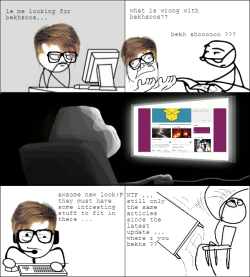Film Review: “A Jihad for Love”
788 views This week Heinrich Boll Foundation-Middle East Office and Nasawiya hosted two screening of the Movie “A jihad for Love” by Parvez Sharma. The movie was received well (to say the least) in the Western world and received more awards (deservingly of course) than I could count. The movie however was not received in the Arab world very well. The screening was hard to organize and advertise since the movie would not be approved through general security, the crowd didn’t know what to expect, and I am not sure what they felt after sitting through this 6 years in the making piece of work.
This week Heinrich Boll Foundation-Middle East Office and Nasawiya hosted two screening of the Movie “A jihad for Love” by Parvez Sharma. The movie was received well (to say the least) in the Western world and received more awards (deservingly of course) than I could count. The movie however was not received in the Arab world very well. The screening was hard to organize and advertise since the movie would not be approved through general security, the crowd didn’t know what to expect, and I am not sure what they felt after sitting through this 6 years in the making piece of work.
What jumps at you when you watch this movie is that for the first time it is not just anyone talking about Islam and homosexuality, but rather religious practicing Muslims discussing their homosexuality, their own battle to re-conciliate their faith, religion, and sexual orientation.
The movie traces six stories from South Africa to India, Turkey, Iran, Egypt, and Morocco.
Imam Muhsin Hendricks talks about his life as a gay Imam and father. The Iranians: Amir, Payam, Arsham, and Mojbata wait receive asylum in Canada. Mazen ran away from Egypt after 2 years of jail following his arrest in the 2001 Queen Boat incident. Ferda, a turkish sufi muslim, takes her lover Klymet to meet her mother. Ashen and Qasim, the two indian friends who reject western constructs and identify as ‘koti’ and ‘zenana’ even though these are derogatory words for many indians. Last but not least were Maha and Maryam.
Maha & Maryam were perhaps the most interesting story in the movie, they embodied the struggle of being muslim and gay. They search for texts about lesbianism only to find that Islam condemns their love, they pray for forgiveness, and they declare their love in an ancient mosque.
The movie focused on the personal struggles (the Jihad) of the individuals and framed it in the bigger context of the Islamic nation. While it does not depict Islam as “terrorist” but as a religion of love and understanding, it does depict the Islamic nation as inherently homophobic. For a person standing on the side lines watching this movie as the first introduction for gay life in the muslim world, he/she would assume that there is no way for an openly gay person to survive in Egypt and Iran alike. One can assume that governments are simply out to get you if you are gay. Yes there might be some truth to that but that is hardly the case across the region.
The laws in Egypt and India for example are inherited from English colonialism, the ones in Saudi Arabia and Iran are religious.
It does conclude with a very interesting line: “One can be gay or lesbian and still be a good muslim.” An almost affirmation that Gay people are people too!
Watch the movie once for fun, a second time for criticism and let us know what you think. I might not be a big fan of the movie but it does strike on some good points and I am glad I got the chance to see it.





Leave a Reply